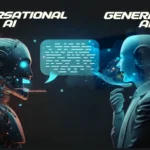A modified version of the ChatGPT-4 model, which powers OpenAI’s flagship product, ChatGPT, called ChatGPT-4o, was introduced. In a livestream announcement on Monday, OpenAI CTO Mira Murati said that the updated model “is much faster” and improves “capabilities across text, vision, and audio.” All users will have access to it for free, and paying users will still be able to “have up to five times the capacity limits” compared to free users, as stated by Murati.
What is GPT-4o?
The new flagship model from OpenAI, GPT-4o, is capable of real-time reasoning in text, vision, and audio. It is intended to be open to all users without restriction. GPT-4o can be used in the Assistants API, Batch API, and Chat Completions API, and it is made available to anyone with an OpenAI API account. This model also supports function calls and the JSON mode, and you can get started by using the Playground.
Paid vs Free version
The capacity limit for paid users will remain five times higher than for standard offerings. According to OpenAI CTO Mira Murati, the deployment of GPT-4o will take place gradually over the next few weeks. All users should have a seamless integration and transition, according to OpenAI’s teams.
When will GPT-4o be available?
GPT-4o will gradually become accessible to the public. The ChatGPT team is already incorporating text and picture features, offering certain features for free to all users. Developers and carefully selected partners will gradually receive access to audio and video functionalities. It is assumed that all modalities—voice, text-to-speech, and vision—will fulfill all safety requirements before full release.
What are GPT-4o’s limitations and safety concerns?
Despite being billed as the most sophisticated model, GPT-4o has some limitations. OpenAI’s official blog states that GPT-4o is still in the early stages of investigating the potential for unified multimodal interaction. As a result, the company will initially offer some features, such as audio outputs, in limited quantities and with preset voices. The company claims that fully realizing its potential for easily handling complex multimodal tasks will necessitate additional development and updates.
GPT-4o has built-in safety features, such as “filtered training data, and refined model behavior post-training,” according to OpenAI. According to the company, the new model has passed rigorous safety evaluations and external reviews that concentrated on bias, misinformation, and cybersecurity risks. Even though GPT-4o currently only receives a Medium-level risk rating in these categories, OpenAI stated that ongoing efforts are being made to identify and reduce new risks.
Using video and Screenshots
Video is now another way to communicate with ChatGPT. This allows you to share real-time video of a problem you’re having, like a math problem, and get assistance from other users. ChatGPT will either provide you with the solution or assist you in solving it on your own.
Along with asking ChatGPT about previous conversations, searching for real-time information within a conversation, and performing advanced data analysis by uploading charts or code before asking questions, you can also share screenshots, photos, and documents with text and images.
GPT-4, which was released in March 2023, was previously accessible for $20 per month through the ChatGPT Plus subscription. To answer queries, it employs one trillion parameters or bits of data. GPT-3.5, an even older version with a smaller context window of 175 billion parameters, was freely available. “The next frontier is something we care about a lot,” Murati added. “So soon we’ll be updating you on our progress towards the next big thing.”
Conclusion
With real-time reasoning in audio, vision, and text, OpenAI’s GPT-4o is a significant step forward in AI technology. Prioritizing security in the deployment process will result in both paid and unpaid alternatives. Users can expect improved multimodal interaction and robust safety features as it gradually integrates, ushering in a new era of AI innovation.





